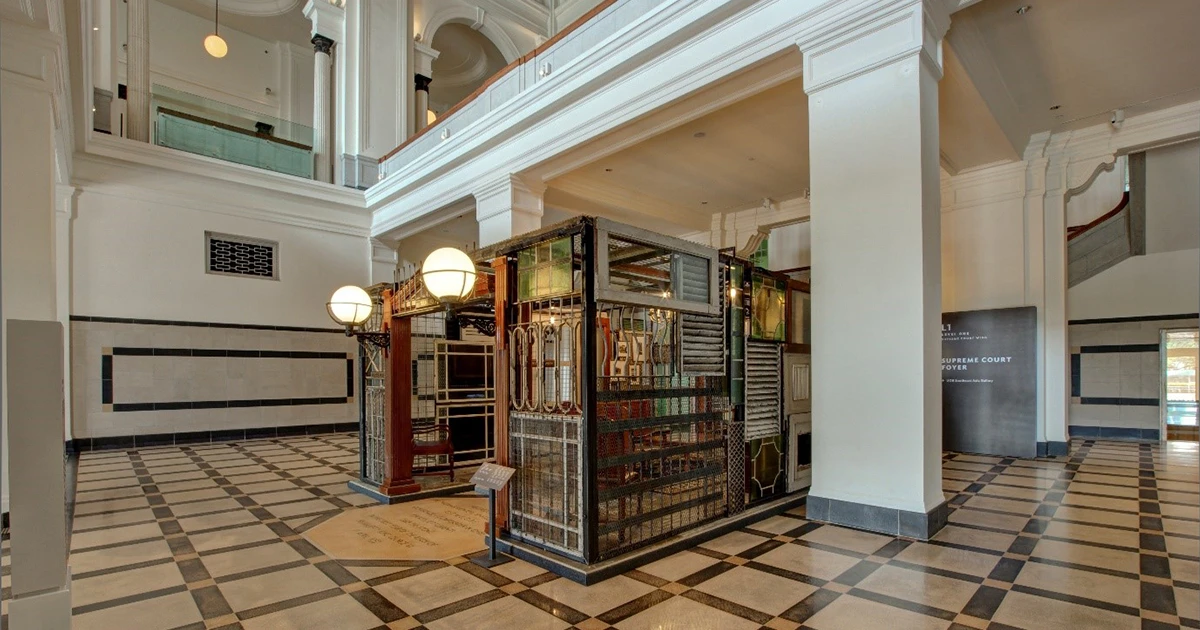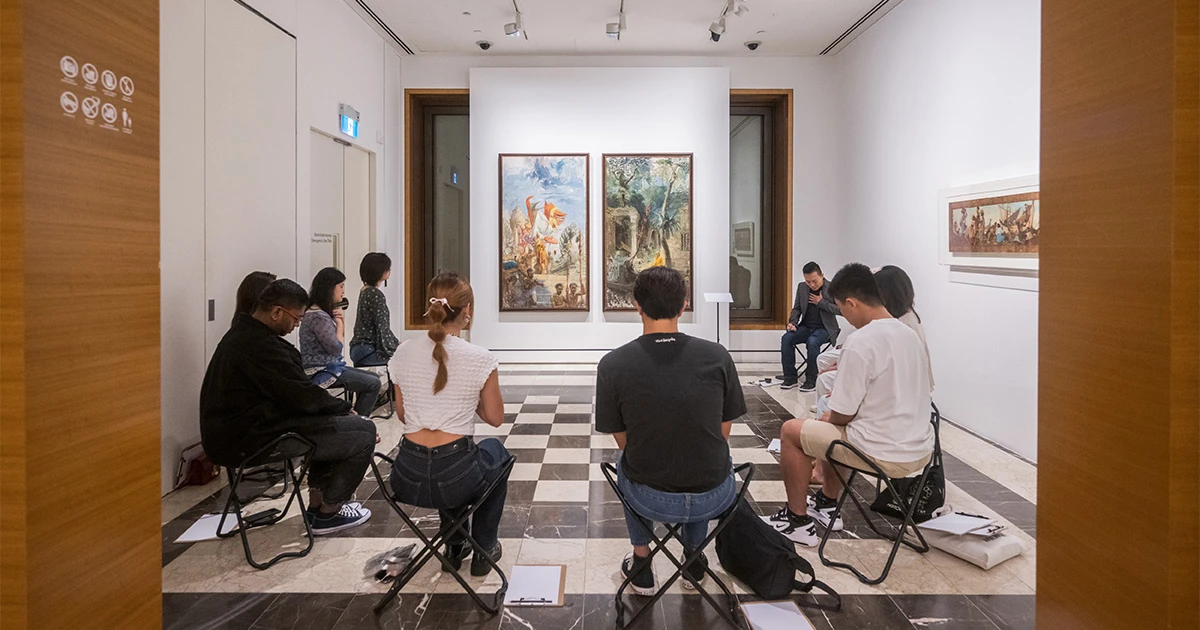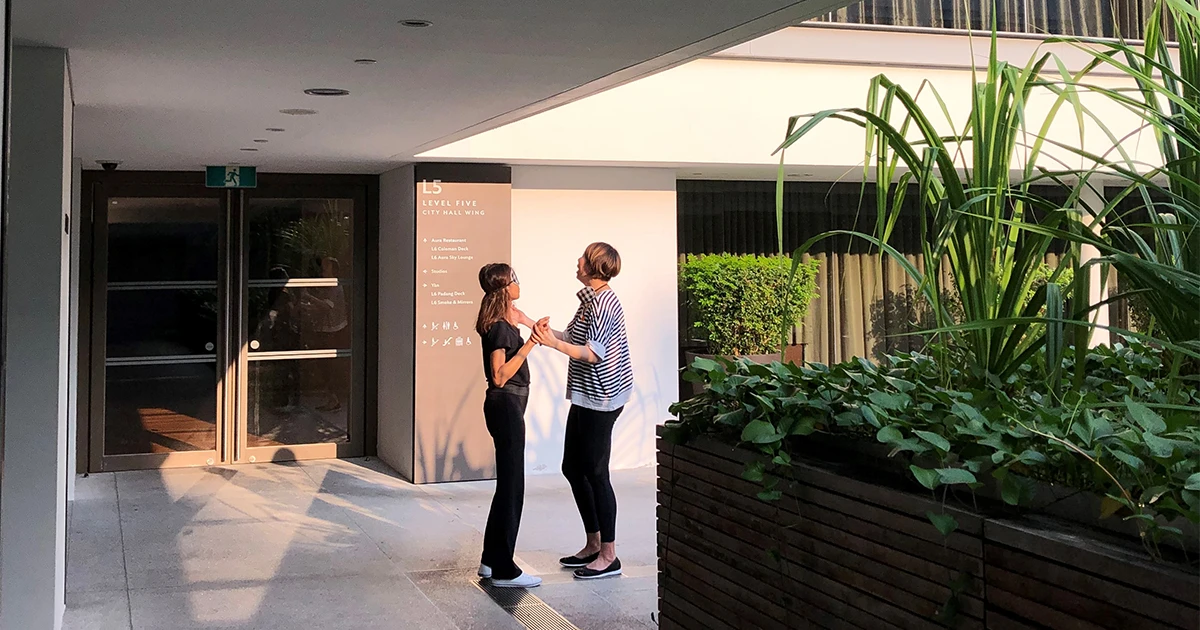History Teachers Ask a Curator | Awakenings: Art in Society in Asia 1960s–1990s
Awakenings: Art in Society in Asia 1960s–1990s drew interest from history students as well as their teachers, three of whom sat with curators Adele Tan, Charmaine Toh and Seng Yu Jin to talk about the exhibition. Their dialogue has been condensed and edited for readers of Perspectives.
How History Was Wounded, 1989.
Video, single channel, 4:3 format,
colour and sound (mono), 25 min. Collection of the artist.
In the previous edition of Ask A Curator, curators of Awakenings: Art in Society in Asia 1960s–1990s fielded questions by history students from Nan Chiau High School and River Valley High School on the instant messaging app Telegram. On a separate occasion, their teachers Gary Lim, John Huang, and History Master Teacher Joseph Tham sat down with the curators too. As Master Teacher, Joseph shapes the syllabus and teachers’ professional development.
The trio found themselves absorbed in a two-hour chat with curators Adele Tan, Charmaine Toh and Seng Yu Jin, discovering how art unveils different perspectives of history. Their dialogue has been condensed and edited for readers of Perspectives.
Gary: How did the exhibition present Southeast Asian artworks to bring out their themes of anti-colonialism and rising nationalism in the mid-20th century?
Yu Jin: Before we get to answering the question, we need to talk about how this exhibition was framed. We wanted to take a comparative approach by looking at different works in relation to broader connected histories in Asia. We identified several historical moments and contexts in which there were shared historical affinities as well as aesthetic connections, like certain motifs or symbols or ideas.
Your question identifies two interconnected contexts that the exhibited works engage with – “anti-colonialism” and “rising nationalism.” For example, in the section of the exhibition on New Solidarities, we compared the woodcuts of Hong Sung-Dam to the woodcut movement from Singapore and Malaysia in the 1950s and 60s. Woodcut is both a medium and a movement across different places and time periods that resonate with each other. Hong Sung-Dam’s work about the Gwangju Uprising was about freedom and democracy. He made 49 woodcuts, of which we exhibited more than half. In them, you can see many people resisting the military, protesting against dictatorship and forms of authoritarianism. In the same period, woodcut in Singapore and Malaya addressed freedom of a different sort – issues such as class inequality, social injustices and poverty, marshalled as part of the anti-colonial movement against the British.
Adele: A lot of these works also take the United States as their anti-colonial antagonist, referring to the economic colonialism of the time. As you go through the exhibition, you’ll see the United States represented by symbols of capitalism such as Coca-Cola bottles. There is a sense that they are the new colonial superpower of the 20th century.
Yu Jin: We’re trying to complicate these histories by drawing connections while highlighting differences in their respective contexts. There are more examples from the exhibition that enable students to rethink the resonances between art and history. Having students use art as a tool for questioning and thinking is a kind of resistance against different ways in which histories have been erased or forgotten.
Image courtesy of Hong Sung-Dam.
Gary: Were any of these artworks banned by governments at the time and if so, why?
Charmaine: The example of Hong Sung-Dam’s woodcuts answers this question too. The work was banned when it was created in the 1980s and only circulated in museums and galleries later. It is from the collection of the Museum of Modern and Contemporary Art Korea (MMCA) and is now part of the official canon of South Korean art history. While our Korean counterparts have restrictions on collecting North Korean art, these works about the Gwangju Uprising are now perfectly acceptable, and their collection encouraged for historical record.
Yu Jin: Hong Sung-Dam was actually arrested and imprisoned in 1989. The politics of South Korea is dynamic and collecting may depend on the affiliations of those in power. For example, when Park Geun-hye was president, it was difficult for South Korea’s state institutions to mount exhibitions of the Minjung art as the movement was critical of her father Park Chung-hee, who came to power with the May 16 military coup d'état of 1961 and served as country’s third unelected president from 1963 until his assassination in 1979 . I think it’s really interesting how the whole political situation really changes things.
Another artist to highlight is San Minn, whose work is in the section New Solidarities. He was also arrested and imprisoned for slightly over three years. The painting we have is of the prison he was put in called Insein, in Yangon. He was detained for the incident involving the funeral of former United Nations (UN) Secretary-General U Thant in 1974. When U Thant died, his body was flown back to Yangon, but the military-led government did not give him a state funeral. The Burmese revered him, and this caused a big tussle over his body with the students of Rangoon University. Of course, the military eventually won because they had guns, and student leaders like San Minn were arrested for their involvement in making political posters supporting activists during their campaign. This exhibition does have works by artists who were imprisoned for their art-making, although for San Minn specifically, it was his social and political activism.
Adele: Sometimes you don’t need a government to ban or censor art – you can also self-censor. An artist may choose not to exhibit a work or works for a long time because it might be challenging or invite trouble. Works by Teo Eng Seng that specifically reference Operation Spectrum, the security operation in 1987 against the alleged Marxist conspiracy in Singapore, were never released for public viewing except for a semi-private show in the artist’s own gallery. This is something we also need to think about – how other forms of repression take place.
John: I feel that some of the artworks suggest a politics of resistance, contestation and conflict, more strongly than written sources. It can be quite different when you look at conflict through words, rather than actions or an immersive installation. Although people tend to think art is very atas or highbrow, students should realise it’s a very accessible way for people to express themselves, and one of my aims is to bridge that gap. The last conversation you (curators) had with them was very awkward, but they really came alive after! I asked why they didn’t say these things in front of the curators, and they said, “They look like experts, they look like they know everything, we may say something wrong.” But that’s exactly why we’re here – you can say the wrong things.
Gary: What did Asian artists seek to change in their societies?
Adele: There’s a part in the show about gender and society that is relevant to this question. At the time, women artists were organising themselves. They may not have necessarily been pushing all the aesthetic envelopes, but they emphasise the patriarchal constructs that control society at large. There is currently a plurality of opinions about where we are in society, whose voices we’re not hearing, what kinds of stigmatised or delimited roles we or others have. That’s something we wanted to address as our culture is beginning to change, alongside our ideas of men and women.
Yu Jin: History is usually about the winners, but the curators approached this exhibition by thinking about who has been marginalised. And as Adele mentioned, women have been marginalised.
John: As Gary mentioned, people (whether students or teachers) may think art is too highbrow or abstract for them to appreciate. How did you address the issue of comprehensibility in curating this show?
Adele: This show opened in a busy period of current affairs. The show overlapped with the 30th anniversary of the Tiananmen Square protests, the Hong Kong protests and the Singapore Bicentennial. A good way for students to enter the story is to tap into the current milieu so they have an affective connect. History is not an outside or abstract thing that they only talk about, but something they must grapple with.
Yu Jin: I think one of the effective ways to address John’s question is to also have students make art themselves. They have iPhones now and can create photographic or video(graphic) works and may find that art is not such an atas thing after all.
In terms of the exhibition itself, we tried to prioritise “seeing”. The first work in the exhibition is Eyes by Rajendra Gour, and the next work is For The Damaged Right Eye by Matsumoto Toshio. Lee Seung-taek’s Burning Canvases Floating on the River has been enlarged to complement the Xiamen Dada burning their own work just behind it. Certain connections can be made just by seeing these repeated images. Besides that, there are also familiar materials used in an unfamiliar way. Function is stripped from objects so they will be thought about differently. Then we have artists who intervene in the streets by using their own bodies. We tried using aesthetic strategies, drawing common concepts together visually to take on this issue. I don’t know if it worked but this is what we tried to do. We need the confidence to draw from our own experiences, because we produce meaning by interpreting or reading these works in our own ways. This produces important new subjectivities.
Gary: When I first came to the National Gallery, I brought along a colleague who was an art teacher. He explained aspects of the art I could not understand. It was a different perspective, and I gained valuable knowledge on the whys of art. He also conducted his explanation as if he were speaking to a student, using simple terms that was a positive introduction to the subject. I believe in learning beyond the classroom, which is why I’ve been working with the National Gallery for the past two years and brought students here to look at artwork dated from Singapore’s colonial rule. They can draw connections to what they’ve learnt in the classroom about the history of Southeast Asia. It’ll be good if museums have a more structured way of explaining the art and exhibition.
John: “Art has an important role in rousing the masses from the slumber induced by materialism and pragmatism.” Does this comment resonate with you?
Gary: The opposite of “awakening” is that people were asleep, and they awake from something.
Adele: It’s not really about the moment of sleeping and awakening, not one thing and the next. But there is a changing sense of consciousness about certain issues over time, which is why we gravitated toward the 1960s. The methods with which artists were approaching these socio-political issues were changing. It was no longer enough to be painting or sculpting busts because artists were gradually affected by the available media, such as video. People were watching a lot of TV; wars were being broadcast on the news. In art history, the 60s is often identified as a pivotal moment of change in artistic attitudes. Countries in Asia were coming out of independence struggles, throwing away the shackles of colonialism. Those were formative moments, but other things were happening too – the growing consciousness of the place of women in society, civil rights movements in the United States and questions of identity and belonging. Artworks can be at the forefront of these ideas, disseminating themselves to the public. We don’t want to assume that the masses were already induced into a state of materialism and pragmatism.
Charmaine: Consumer culture was on the rise in the 1960s in the same way that advertising was, and artists were literally just grabbing this imagery off the shelves. This materialism, like it or not, was the zeitgeist of the century. It was also giving artists plenty to work with and contributed a sensibility toward a lot of the production of goods and images.
Many artists in the first section of this exhibition were challenging materialism by departing from the norms of authorship or disappearing the object. In this exhibition for example, Cheo Chai-Hiang’s 5’ x 5’ (Singapore River) lines and Datong Dazhang’s book of ideas allowed anyone to manifest art. The irony is as a curator you’re bringing the work back onto the market, into this idea of materialism. We assign value to the work when we buy it for the National Collection or put it up in an exhibition, even if the artist’s intent was for the art to be ephemeral. As curator you’re responsible for going against the artist’s original intent, so there are some ethical considerations there as well.
Art encourages diverse visual and textural interpretations that enrich our personal and critical understanding of history. Through our exhibitions, we hope teachers are inspired to include artists and their artworks as unique voices that add to the dialogue and inquiry of histories.
Editor's Note
If you're a student with questions or teacher wanting to get in touch for more related programmes, contact the Education team at shaun.soh@nationalgallery.sg.












